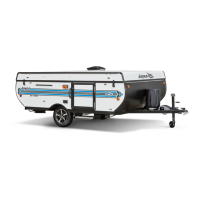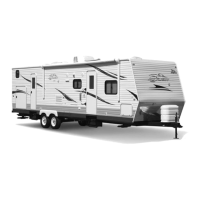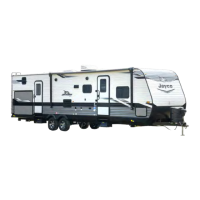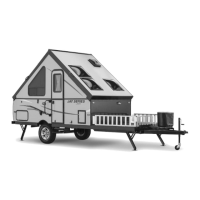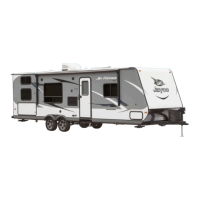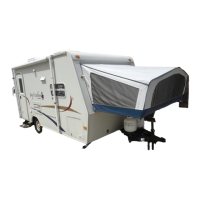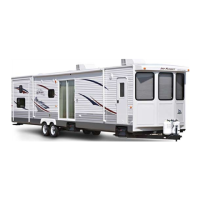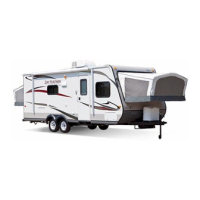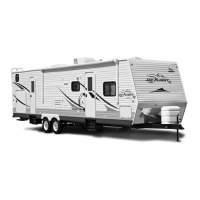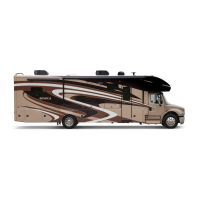Your RV is equipped with a 120-volt AC / 30
amp power cord and load center. A maximum
of 30 amps* of power can be consumed at any
given time. It may be necessary to stagger
usage of some appliances to maintain your
power usage at 30 amps* or lower. The
120-volt AC system provides power to most of
the appliances and all of the electrical outlets.
120-VOLT CIRCUIT BREAKERS
The circuit breaker panel protects the 120-volt
electrical system from overloads, shorts in the
wiring and shorts in the connected
components. When an overload or short
occurs, the circuit breaker will open (or “trip”)
preventing any further flow of electricity and
damage to the RV.
If a circuit breaker has been tripped, shut OFF
the connected appliance (i.e., air conditioner,
microwave, etc.) and allow a brief cooling
period. Then reset the circuit breaker by
moving the appropriate switch OFF and back
ON. If the circuit breaker is continually tripped
and no overload is evident, contact your RV
dealer to have the electrical system tested and
repaired. A circuit breaker identification label is
permanently attached to the inside surface of
the 120-volt load center.Circuit breakers will
not offer complete protection of the RV
electrical system in the event of a power surge
or voltage spike.
Maintenance
At the beginning of camping season, inspect
all the breakers. Turn each breaker OFF and
back ON. Have the circuit breakers replaced
as needed.
Replacement
Please contact your RV dealer for repair
assistance when replacing circuit breakers.
30 AMP POWER CORD
The 30 amp power cord is also commonly
referred to as the “shore line power cord.” This
power cord is designed to ground the RV
electrical system through the external power
source receptacle. It is also designed to carry
the voltage and amperage output of most
campground outlets. Occasionally the
electrical service provided by a campground
may experience low or high voltage (i.e.,
surges or spikes). Any prolonged exposure will
shorten the life of the electrical system and
appliances. Consult your dealer for
recommendations on power surge protection.
Connecting the power cord
Always test the 30 amp external power source
(i.e., the campsite power box or electrical box)
with a ground monitor that uses indicator
lights, before connecting your power cord to it.
If the ground monitor indicates ‘reverse
polarity’ or an ‘open ground’ DO NOT connect
the power cord until the campground staff
corrects their wiring problem.
1. Turn OFF 120-volt power to the
campground power cord receptacle.
2. Turn OFF the load center main 120-volt
circuit breaker.
3. Carefully extend the entire length of the
power cord (approximately 25’ - 35’ or 7 m -
10 m) from the exterior electrical cable
hatch to the external power source.
4. Plug the power cord into the receptacle. Be
sure all the power cord prongs are properly
plugged into the receptacle.
5. Turn ON 120-volt power to the
campground power cord receptacle.
6. Return to your RV and turn ON the load
center main circuit breaker.
7.
To help prevent power surges from
damaging the connected loads, please
follow these instructions when hooking
up to the external power source:
22
SECTION 3
ELECTRICAL SYSTEMS
Replacement circuit breakers must be of
the same voltage, amperage rating and
type. Never use a higher rated replacement
circuit breaker; doing so may cause a fire
by over heating the RV wiring.
